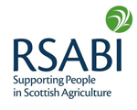Soils are of key importance on any farm. They are a living mass containing a micro-climate of microbes, bacteria, invertebrates and nutrients which all interact to provide a medium in which crops will grow. It is often assumed that nitrogen (N), phosphate (P) and potassium (K) fertiliser is the key to successful crop production. Whilst they can play a vital role there are other factors which must be correct and prioritised before N, P, K fertiliser.
- Drainage – without adequate drainage any crop will struggle.
- Lime (p4 level) – correct application levels of lime are an absolute necessity for the success of any crop.
- Organic matter – the existence of adequate organic matter in the soil helps ensure that microbial and bacterial activity is taking place and that nutrients can be properly exchanged and absorbed into the crop root systems.
If the three factors above are addressed N, P and K fertilisers will work most efficiently. Nitrogen is the most important nutrient influencing grass production. It simply increases the bulk of grass production in a virtually linear response up to about 300kg/ha applied.
Phosphorous is required for plant metabolism and new growth. It plays a very important role in root and seedling development in any newly sown crop and is key for new grass and particularly clover establishment.
Potassium is required to compliment nitrogen and the amount removed in grass production is second to nitrogen. Potassium is concentrated in the sap of the plant and is therefore important in maintaining the strength and structure of the foliage. Potassium also has a role in sugar formulation, root development and transportation of nutrients around the plant. Potassium deficient plants lack vigour, tend to have poorer rooting and as a result will wilt in droughts and suffer poorer winter hardiness compared to plants with satisfactory potassium levels.
There are trace elements to consider also and sulphur is required in similar levels to phosphorous. This element was never a problem prior to the government’s Clean Air Acts by industry, but as our industrial emissions into the atmosphere have been reduced, the amount of sulphur in the air is no longer enough to sustain many crops adequately and application of sulphur will be beneficial.
The other trace elements essential for grass growth are:
- Iron
- Manganese
- Boron
- Copper
- Zinc
- Molybdenum
- Chlorine
- Cobalt
The availability of these is very dependent on soil type, silage of plant growth and application of the array of livestock and human waste products available.
FERTILISHING GRASS RESEEDS
Soil testing is recommended primarily to establish the pH level and ascertain whether lime is required to get the pH of the soil to 6.0-6.2. The phosphate and potassium status is important too and will determine how much seedbed fertiliser is required to provide a good establishment of the new grass mixture.
As a rule of thumb a spring/summer reseed should be given: 60kgs/ha N, P and K
Allowances can be made if organics manures have been applied.
Autumn reseeds will not benefit from as much nitrogen and should receive less:
20kgs/ha N, 60kgs/ha P and 60kgs/ha K




